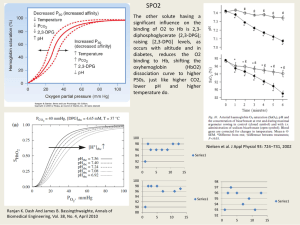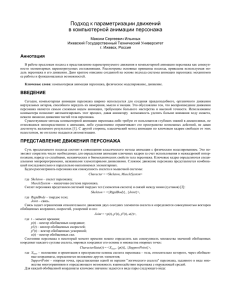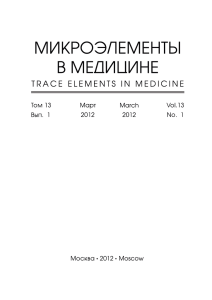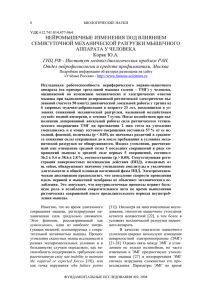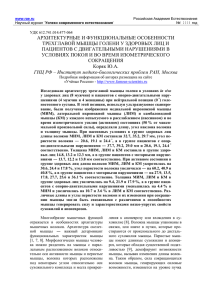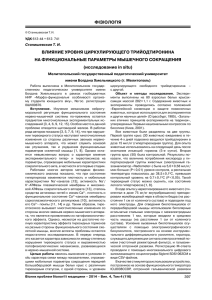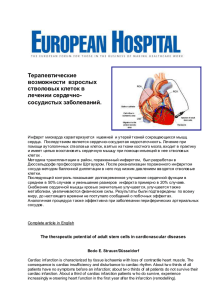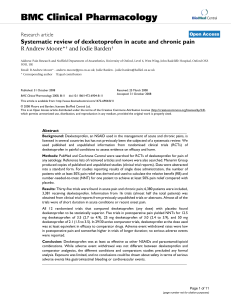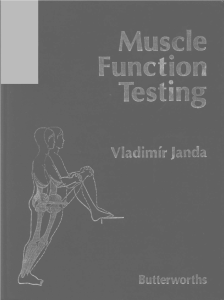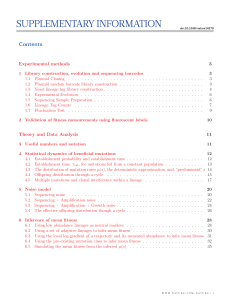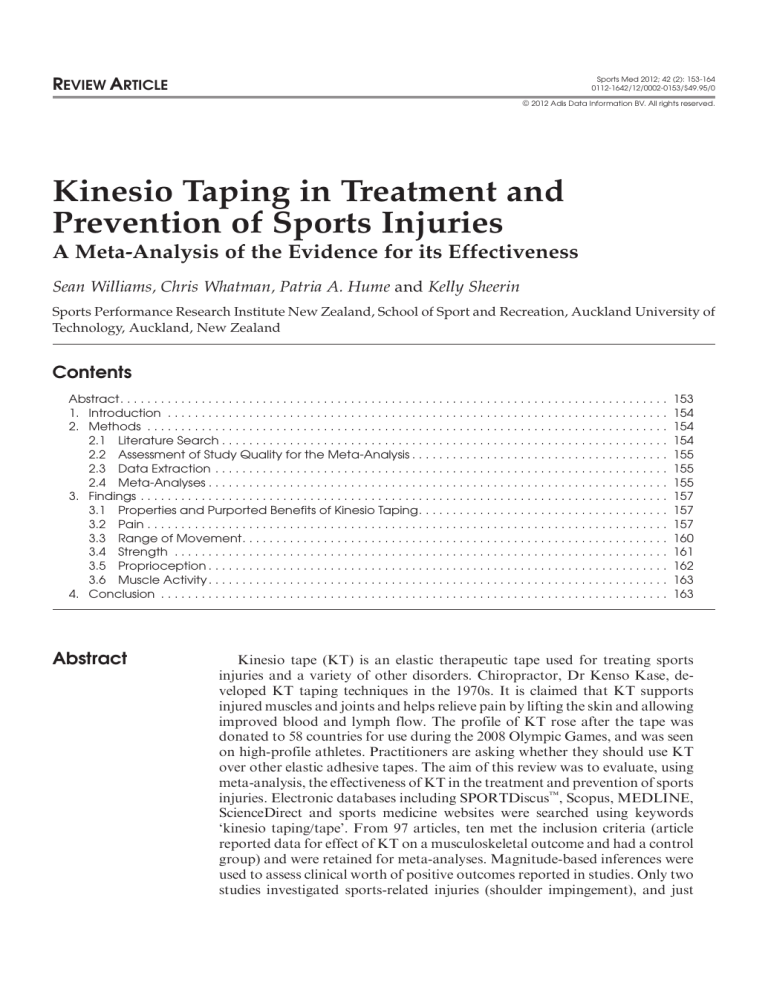
Sports Med 2012; 42 (2): 153-164 0112-1642/12/0002-0153/$49.95/0 REVIEW ARTICLE ª 2012 Adis Data Information BV. All rights reserved. Kinesio Taping in Treatment and Prevention of Sports Injuries A Meta-Analysis of the Evidence for its Effectiveness Sean Williams, Chris Whatman, Patria A. Hume and Kelly Sheerin Sports Performance Research Institute New Zealand, School of Sport and Recreation, Auckland University of Technology, Auckland, New Zealand Contents Abstract. . . . . . . . . . . . . . . . . . . . . . . . . . . . . . . . . . . . . . . . . . . . . . . . . . . . . . . . . . . . . . . . . . . . . . . . . . . . . . . . . 1. Introduction . . . . . . . . . . . . . . . . . . . . . . . . . . . . . . . . . . . . . . . . . . . . . . . . . . . . . . . . . . . . . . . . . . . . . . . . . . 2. Methods . . . . . . . . . . . . . . . . . . . . . . . . . . . . . . . . . . . . . . . . . . . . . . . . . . . . . . . . . . . . . . . . . . . . . . . . . . . . . 2.1 Literature Search . . . . . . . . . . . . . . . . . . . . . . . . . . . . . . . . . . . . . . . . . . . . . . . . . . . . . . . . . . . . . . . . . . 2.2 Assessment of Study Quality for the Meta-Analysis . . . . . . . . . . . . . . . . . . . . . . . . . . . . . . . . . . . . . . 2.3 Data Extraction . . . . . . . . . . . . . . . . . . . . . . . . . . . . . . . . . . . . . . . . . . . . . . . . . . . . . . . . . . . . . . . . . . . 2.4 Meta-Analyses . . . . . . . . . . . . . . . . . . . . . . . . . . . . . . . . . . . . . . . . . . . . . . . . . . . . . . . . . . . . . . . . . . . . 3. Findings . . . . . . . . . . . . . . . . . . . . . . . . . . . . . . . . . . . . . . . . . . . . . . . . . . . . . . . . . . . . . . . . . . . . . . . . . . . . . . 3.1 Properties and Purported Benefits of Kinesio Taping. . . . . . . . . . . . . . . . . . . . . . . . . . . . . . . . . . . . . 3.2 Pain . . . . . . . . . . . . . . . . . . . . . . . . . . . . . . . . . . . . . . . . . . . . . . . . . . . . . . . . . . . . . . . . . . . . . . . . . . . . . 3.3 Range of Movement. . . . . . . . . . . . . . . . . . . . . . . . . . . . . . . . . . . . . . . . . . . . . . . . . . . . . . . . . . . . . . . 3.4 Strength . . . . . . . . . . . . . . . . . . . . . . . . . . . . . . . . . . . . . . . . . . . . . . . . . . . . . . . . . . . . . . . . . . . . . . . . . 3.5 Proprioception . . . . . . . . . . . . . . . . . . . . . . . . . . . . . . . . . . . . . . . . . . . . . . . . . . . . . . . . . . . . . . . . . . . . 3.6 Muscle Activity . . . . . . . . . . . . . . . . . . . . . . . . . . . . . . . . . . . . . . . . . . . . . . . . . . . . . . . . . . . . . . . . . . . . 4. Conclusion . . . . . . . . . . . . . . . . . . . . . . . . . . . . . . . . . . . . . . . . . . . . . . . . . . . . . . . . . . . . . . . . . . . . . . . . . . . Abstract 153 154 154 154 155 155 155 157 157 157 160 161 162 163 163 Kinesio tape (KT) is an elastic therapeutic tape used for treating sports injuries and a variety of other disorders. Chiropractor, Dr Kenso Kase, developed KT taping techniques in the 1970s. It is claimed that KT supports injured muscles and joints and helps relieve pain by lifting the skin and allowing improved blood and lymph flow. The profile of KT rose after the tape was donated to 58 countries for use during the 2008 Olympic Games, and was seen on high-profile athletes. Practitioners are asking whether they should use KT over other elastic adhesive tapes. The aim of this review was to evaluate, using meta-analysis, the effectiveness of KT in the treatment and prevention of sports injuries. Electronic databases including SPORTDiscus, Scopus, MEDLINE, ScienceDirect and sports medicine websites were searched using keywords ‘kinesio taping/tape’. From 97 articles, ten met the inclusion criteria (article reported data for effect of KT on a musculoskeletal outcome and had a control group) and were retained for meta-analyses. Magnitude-based inferences were used to assess clinical worth of positive outcomes reported in studies. Only two studies investigated sports-related injuries (shoulder impingement), and just Williams et al. 154 one of these involved injured athletes. Studies attending to musculoskeletal outcomes in healthy participants were included on the basis that these outcomes may have implications for the prevention of sporting injuries. The efficacy of KT in pain relief was trivial given there were no clinically important results. There were inconsistent range-of-motion outcome results, with at least small beneficial results seen in two studies, but trivial results in two other studies across numerous joint measurements. There was a likely beneficial effect for proprioception regarding grip force sense error, but no positive outcome for ankle proprioception. Seven outcomes relating to strength were beneficial, although there were numerous trivial findings for quadriceps and hamstrings peak torque, and grip strength measures. KT had some substantial effects on muscle activity, but it was unclear whether these changes were beneficial or harmful. In conclusion, there was little quality evidence to support the use of KT over other types of elastic taping in the management or prevention of sports injuries. KT may have a small beneficial role in improving strength, range of motion in certain injured cohorts and force sense error compared with other tapes, but further studies are needed to confirm these findings. The amount of case study and anecdotal support for KT warrants well designed experimental research, particularly pertaining to sporting injuries, so that practitioners can be confident that KT is beneficial for their athletes. 1. Introduction Taping has long been used for the prevention and treatment of sports injuries to provide protection and support to the joint or muscle during movement.[1] Taping can improve proprioception, which is believed to play a role in preventing acute injury and in the evolution of chronic injury.[2] Kinesio taping (KT) is an elastic therapeutic tape used for the treatment of sports injuries and a variety of other conditions.[1] Developed by Japanese chiropractor, Dr Kenso Kase, in the 1970’s, KT has become increasingly popular amongst athletes and practitioners alike. The profile of KT was raised after it was seen on athletes at the 2008 Olympic Games. Despite the increasing use of KT in clinical practice, uncertainty remains regarding its true merit. While promising anecdotal reports and case studies exist, a comprehensive review of the literature was warranted to guide the future use of KT amongst athletes and practitioners. In 2010, Bassett et al.[3] provided a systematic review of three studies[1,4,5] that reported the use and treatment efficacy of KT for musculoskeletal conditions. Two of the three studies exhibited high methodological quality, but none of the articles ª 2012 Adis Data Information BV. All rights reserved. showed any significant clinical effects for KT. Our review expands on Bassett et al.’s[3] information by examining the effects of KT in healthy populations, along with injured populations, and using magnitude-based inferences to examine the clinical worth of reported positive (beneficial) outcomes via a meta-analysis. Using a meta-analysis, the aim of the review is to evaluate the effectiveness of KT in the treatment and prevention of sports injuries. 2. Methods Cochrane Collaboration[6] review methodology (literature search, assessment of study quality, data collection of study characteristics, analysis and interpretation of results, recommendations for clinical practice and further research) was used to evaluate the effectiveness of KT in the treatment and prevention of sports injuries. 2.1 Literature Search Electronic data bases including SPORTDiscus, Scopus, MEDLINE, ScienceDirect, and sports medicine websites were searched using keywords ‘kinesio taping/tape’. Of the 96 articles sourced, Sports Med 2012; 42 (2) Kinesio Taping Meta-Analysis Review ten studies were used for meta-analysis using the following inclusion/exclusion criteria: (i) the article reported data for effect of KT on a musculoskeletal outcome (e.g. pain, range-of-motion, proprioception); (ii) the article had a KT group and a comparison group (e.g. KT applied without tension, placebo taping, no taping); and (iii) the full version was available in English. Only two studies investigated participants with sportsrelated injuries (shoulder impingement), and just one of those involved athletes. Six studies attending to musculoskeletal outcomes in healthy participants were included on the basis that these outcomes may have implications for the prevention of sporting injuries. 2.2 Assessment of Study Quality for the Meta-Analysis The quality of the ten papers that met our inclusion/exclusion criteria was assessed based on the following key components of the methodological quality: (i) randomization of subject allocation; (ii) blinding of subjects; and (iii) blinding of all assessors. These criteria have been identified as being fundamental in reducing bias in clinical trials.[7] Study quality was ranked 1 to 4, where the larger number indicates better quality: 4 = controlled experimental study, with randomization of subject allocation, plus blinding of subjects and assessors; 3 = controlled experimental study, with randomization of subject allocation and blinding of subjects or assessors, but not both; 2 = controlled experimental study, with randomization of subject allocation, but no blinding of subjects or assessors; and 1 = controlled experimental study that lacked randomization of subject allocation and blinding of subjects and assessors. Note, in randomized crossover designs, subjects were randomly allocated the order in which treatments were received. Methodological limitations were associated with many of the studies reviewed in this article, including failure to adequately blind both the subjects and therapists, failure to use injured athletic populations and a lack of a placebo taping group to address for the placebo effect of taping. Studies assessed KT effects on a variety of joints and muscles, but the small number of ª 2012 Adis Data Information BV. All rights reserved. 155 studies of each body area meant there was often insufficient evidence to make a clear conclusion. No studies addressed the long-term effects of KT in the management of sports injuries. Many studies made inferences about the efficacy of KT based only on the p-value derived from a null hypothesis test. This approach fails to provide information on the size of the observed effect, and its clinical importance.[8] 2.3 Data Extraction For the ten studies included, data were extracted including participants’ characteristics, study design, methodological quality, interventions, outcome measures and results (see table I). 2.4 Meta-Analyses A number of outcome measures were used to evaluate the effectiveness of KT, including strength, pain, range of movement, proprioception and muscle activity. We analysed all statistically significant results reported within the ten studies, and made clinical inferences regarding the true value of their effects in a manner outlined by Batterham and Hopkins.[8] Results that were not reported as being statistically significant were also assessed (where sufficient data were provided), and any results found to be of benefit in our analysis are discussed within the thematic sections. The p-value relating to the outcome measure was used to determine the likelihood that the true magnitude of the effect was substantial in a clinically beneficial or harmful way. Thresholds for clinical benefit were taken from extant literature. Where no previously validated thresholds existed, a Cohen unit of 0.2 of the baseline between-subject standard deviation for the outcome measure was used as the default. If no baseline data were provided, a threshold for clinical benefit was agreed upon by the authors. An effect was clinically unclear if there was >25% likelihood that the true value was beneficial, with odds of benefit relative to odds of harm (odds ratio) <66%. The effect was otherwise clinically clear; beneficial if the likelihood of benefit was >25%, and trivial or harmful for other outcomes, depending on the observed value. Where a study reported a p-value as ‘p < 0.05’, ‘p = 0.05’ was used in the analysis. Where Sports Med 2012; 42 (2) Williams et al. 156 Table I. Characteristics of studies that evaluated the effectiveness of kinesio taping (KT) on strength, pain, range of motion (ROM), proprioception or muscle activity Study Study qualitya Study aim Study design Subject characteristicsb Thelen et al.[1] 4 Effect of KT vs sham treatment on pain and ROM Randomized, blinded clinical trial Control group: 20 – 2 y, 17 M, 4 F. Experimental group: 21 – 2 y; 19 M, 2 F. All patients clinically diagnosed with rotator cuff tendonitis/impingement Gonzalez-Iglesias et al.[4] 4 Effect of KT vs sham treatment on neck pain and cervical ROM in individuals with acute whiplash-associated disorders Randomized, blinded clinical trial Control group: 32 – 7 y; 10 M, 10 F. Experimental group: 33 – 6 y; 10 M, 11 F. All patients reported neck pain as a result of a motor accident Hsu et al.[5] 3 Effect of KT vs placebo taping on kinematics, muscle activity and strength of the scapular region in baseball players with shoulder impingement Randomized crossover, pre- and post-test repeated measures design. Examiners were blinded 17 amateur baseball players with shoulder impingement: 23 – 3 y Chang et al.[9] 3 Effect of KT vs placebo and notaping on maximal grip strength and force sense of healthy collegiate athletes Randomized, blinded repeated measures design with single group 21 healthy collegiate athletes: 21 – 3 y Vithoulka et al.[10] 2 Effect of KT vs placebo and notaping on quadriceps strength at maximum concentric and eccentric isokinetic exercise Randomized repeated measures design 20 healthy nonathlete F: 27 – 4 y Yoshida and Kahanov[11] 2 Effect of KT vs no-taping on trunk flexion, extension and lateral flexion Randomized crossover, pre- and post-test repeated measures design 30 healthy subjects: 27 – 6 y; 15 M, 15 F Fu et al.[12] 2 Effect of KT vs no-taping on muscle strength in quadriceps and hamstring Muscle strength assessed in three conditions (without KT, immediately after application of KT and 12 h after taping with tape still in situ). Randomized order of three conditions 14 healthy college athletes: 20 – 1 y; 7 M, 7 F Halseth et al.[13] 2 Effect of KT vs no-taping on ankle proprioception (reproduction of joint position sense) Randomized repeated measures design 30 healthy subjects: 18–30 y; 15 M, 15 F Lee et al.[14] 2 Effect of KT vs no-taping on grip strength Randomized repeated measures design 40 healthy subjects: 23 – 2 y; 20 M, 20 F Słupik et al.[15] 1 Effect of KT vs no-taping on bioelectrical activity of vastus medialis muscle Non-randomized control trial 27 healthy subjects: 23 – 4 y; 15 M, 12 F a Study quality was ranked 1–4 where the larger number indicates better quality: 4 = controlled experimental study, with randomization of subject allocation, plus blinding of subjects and assessors; 3 = controlled experimental study, with randomization of subject allocation, and blinding of subjects but not assessors; 2 = controlled experimental study, with randomization of subject allocation, but no blinding of subjects or assessors; and 1 = controlled experimental study that lacked randomization of subject allocation and blinding of subjects and assessors. Note, in crossover designs, subjects were randomly allocated the order in which treatments were received. b Age data in years are presented as mean – standard deviation or ranges where stated. F = female; M = male. an outcome measure was reported with confidence limits, inferences were calculated using a spreadsheet for combining independent groups, with a ª 2012 Adis Data Information BV. All rights reserved. weighting factor of one for the effect.[16] The likelihood that an effect was substantially harmful, trivial or beneficial was given in plain-language Sports Med 2012; 42 (2) Kinesio Taping Meta-Analysis Review 157 terms using the following scale: 0–0.5%, most unlikely; 0.6–5.0%, very unlikely; 5.1–25.0%, unlikely; 25.1–75.0%, possible; 75.1–95.0%, likely; 95.1–99.5%, very likely; 99.6–100%, most likely.[17] Values are reported with 90% confidence limits to express the uncertainty in the true effect. 3. Findings An overview of details of the ten studies metaanalysed are summarized in table I. Table II shows the number of statistically significant and nonsignificant results for each outcome variable reported within the ten studies (note, some studies took several measurements for one variable). Tables III and IV summarize the reported positive statistical results of KT, and our interpretation of the magnitudes of the effects and their clinical importance. Eight studies reported a statistically significant positive outcome for at least one outcome measure. The results of these studies are discussed in the following thematic sections. Our introductory comments for each section also include some reported generic statements from other studies reviewed that did not meet the metaanalysis criteria. These comments help put the thematic section into context, given the various purported benefits of KT. 3.1 Properties and Purported Benefits of Kinesio Taping KT is a thin, elastic tape that is claimed to stretch to 120–140% of its original length, and Table II. Number of reported statistically significant and nonsignificant results, and percentage of positive results from all results, for pain, range of motion (ROM), strength, proprioception and muscle activity outcome measures Outcome measure No. of reported statistically significant positive results No. of reported nonsignificant results Positive results from all results (%) Pain 2 6 25 ROM 16 56 22 Strength 6 10 38 Proprioception 2 2 50 Muscle activity 4 18 18 ª 2012 Adis Data Information BV. All rights reserved. then subsequently recoil back to its original length following application, thus exerting a proposed pulling force to the skin.[13] Compared with conventional tape, it is suggested that KT allows a greater range of motion and can be worn for longer periods of time without the need for reapplication.[18] The proposed benefits of KT include facilitating joint and muscle realignment by strengthening weakened muscles,[19] improving circulation of blood and lymph by increasing the interstitial space between the skin and underlying connective tissues (allowing for increased circulation of both venous and lymphatic fluid),[19] decreasing pain through the reduction in pressure on nociceptors,[19] repositioning subluxed joints by relieving abnormal muscle tension, helping to return the function of fascia and muscle[19] and increasing proprioception through the stimulation of cutaneous mechanorectors.[20] 3.2 Pain The proposed mechanism for the pain relieving effect of KT is through the stimulation of sensory pathways in the nervous system, thus increasing afferent feedback.[21] This is hypothesized to diminish the input from nerve fibres conducting nociception due to the gate control theory.[1] An additional theory is that KT application lifts the skin and directly reduces pressure on subcutaneous nociceptors.[22] Of the ten studies assessed, only one study by Gonzalez-Iglesias et al.[4] reported statistically significant results for a measurement of pain (see table IV). This study had a methodological quality of 4 (best available evidence). There was a greater decrease on a numerical pain rating scale (NPRS) in the KT group versus the sham treatment group for patients with acute whiplashassociated disorders. A 2-point reduction on the NPRS has been identified as the minimal clinically important difference,[23] and therefore, while there were statistically significant betweengroup differences in change scores for immediate post-treatment (0.9 – 0.2) and 24-hours posttreatment (1.1 – 0.3), these changes were both inferred to be most likely trivial in our analysis. Decreases in pain elicited by KT in this study are Sports Med 2012; 42 (2) KT vs placebo treatment KT vs no taping ROM ROM ROM GonzalezIglesias et al.[4] (4) Hsu et al.[5] (3) Yoshida et al.[11] (2) ª 2012 Adis Data Information BV. All rights reserved. 9.1 increase 7.6 increase 7.6 increase 6.7 increase 6.7 increase 1.2 increase 1.2 increase 6.37 cm (10% increase ‘no taping’) 3.1 – 1.9 (cervical left lateral flexion immediate post) 2.3 – 1.9 (cervical left lateral flexion 24 h) 5.5 – 1.5 (cervical right rotation immediate) 6.1 – 1.8 (cervical right rotation 24 h) 5.2 – 1.4 (cervical left rotation immediate) 4.1 – 1.5 (cervical left rotation 24 h) 1.1 – 0.7 (posterior tilt at 30 humeral elevation) 1.2 – 0.8 (posterior tilt at 60 humeral elevation) 17.8 – 14.8 cm (trunk flexion) Likely beneficial Possibly beneficial Possibly beneficial Most likely trivial Very likely trivial Likely trivial Very likely trivial Most likely trivial Most likely trivial Possibly beneficial 89.3 90.0 49.2 39.7 0.2 4.1 8.3 1.4 0.0 0.0 45.7 25.9 9.5 50.9 60.3 99.8 95.9 91.7 98.6 100.0 100.0 54.3 74.1 10.7 11.6 97.7 100.0 26.4 trivial (%) 0.5 0.0 0.0 0.0 0.0 0.0 0.0 0.0 0.0 0.0 0.0 0.0 0.0 0.0 0.0 0.0 harmful (%) KT = kinesio taping. Mean difference in degrees or cm – 90% confidence limits. 9.1 increase 5.8 – 1.5 (cervical right lateral flexion 24 h) Likely beneficial Possibly beneficial 88.4 2.3 0.0 73.6 beneficial (%) Likelihoods that true value of the effect statistic is b 5.9 increase 5.4 – 1.3 (cervical right lateral flexion immediate post) Likely beneficial Very likely trivial Most likely trivial Possibly beneficial Inference Where stated, study quality was ranked 1 to 4 where the larger number indicates better quality: 4 = controlled experimental study, with randomization of subject allocation, plus blinding of subjects and assessors; 3 = controlled experimental study, with randomization of subject allocation, and blinding of subjects but not assessors; 2 = controlled experimental study, with randomization of subject allocation, but no blinding of subjects or assessors; and 1 = controlled experimental study that lacked randomization of subject allocation and blinding of subjects and assessors. Note, in crossover designs, subjects were randomly allocated order in which treatments were received. 7.0 increase 5.9 increase 8.5 – 2.0 (cervical extension 24 h) 9.6 increase 7.0 increase 9.6 increase 6.6 – 1.1 (cervical flexion immediate post) 7.4 – 1.8 (cervical flexion 24 h) 15 increase 19.1 – 10.8 (pain-free shoulder abduction; day 1) 8.2 – 1.7 (cervical extension immediate post) Smallest beneficial difference Reported positive outcomeb a KT vs placebo treatment KT vs placebo treatment ROM Thelen et al.[1] Treatment comparison Outcome measure Study (study quality)a Table III. Reported range of motion (ROM) positive outcomes, 90% confidence limits, smallest meaningful difference and percent likelihood that the effects were clinically beneficial 158 Williams et al. Sports Med 2012; 42 (2) ª 2012 Adis Data Information BV. All rights reserved. KT vs placebo treatment KT vs placebo treatment KT vs no taping Proprioception Strength Strength Strength Chang et al.[9] (3) Hsu et al.[5] (3) Lee et al.[14] (2) Vithoulka et al.[10] (2) 0.44 kgc 0.84 kgc 0.70 kgc 1.6 kgc 1.04 kgc 7.52 Nmc 8.33 Nmc 2.12 kg/mc 10% change 10% change 10% change 10% change 2.5 – 2.1 kg (absolute force sense errors) 3.3 – 2.7 kg (related force sense errors) 1.2 – 1.0 kg (handgrip strength change) 2.9 – 2.4 kg (handgrip strength change in males) 1.6 – 1.3 kg (handgrip strength change in females) 1.96 – 4.9 Nm (quadriceps peak torque at 60/sec during eccentric exercise) 9.88 – 7.3 Nm (quadriceps peak torque at 60/sec during eccentric isokinetic exercise) 3.2 – 1.7 kg/m (peak torque during concentric contraction of the quadriceps at 180/sec) 14.2 – 11.7% (increase in lower trapezius muscle activity at 60–30 humeral elevation) 23.0 – 19.8% (decrease in upper trapezius muscle activity at 90–120 humeral elevation). 54 – 1.2% (increase in vastus medialis muscle activity at 24 h) 22 – 1.1% (increase in vastus medialis muscle activity at 72 h) Very likely substantial Most likely substantial Likely substantial Likely substantial Likely beneficial Possibly beneficial Very likely trivial Likely beneficial Likely beneficial Likely beneficial Likely beneficial Likely beneficial Most likely trivial 96.2 99.9 0.1 91.5 79.2 64.4 3.1 75.9 81.9 81.2 93.2 94.9 0.0 0.0 beneficial (%) trivial (%) 3.8 0.1 19.6 8.1 20.7 35.6 96.7 24.0 17.9 18.6 6.0 3.9 100.0 100.0 0.0 0.0 80.3 0.4 0.1 0.0 0.2 0.1 0.2 1.2 0.8 1.2 0.0 0.0 harmful (%) KT = kinesio taping; NPRS = numerical pain rating scale. c Cohen threshold expressed in raw units is equivalent to 0.2 of the baseline between subject SD. Data are presented as mean – SD. 2-point reduction 1.1 – 0.3 (NPRS 24 h post-treatment) Most likely trivial Likelihood that true value of the effect statistic is: b 2-point reduction 0.9 – 0.2 (NPRS immediate post-treatment) Inference Study quality was ranked 1 to 4 where the larger number indicates better quality: 4 = controlled experimental study, with randomization of subject allocation, plus blinding of subjects and assessors; 3 = controlled experimental study, with randomization of subject allocation, and blinding of subjects but not assessors; 2 = controlled experimental study, with randomization of subject allocation, but no blinding of subjects or assessors; and 1 = controlled experimental study that lacked randomization of subject allocation and blinding of subjects and assessors. Note, in crossover designs, subjects were randomly allocated order in which treatments were received. KT vs no-taping Smallest beneficial difference Reported positive outcomeb a Muscle activity KT vs placebo treatment Hsu et al.[5] (2) Muscle activity Słupik et al.[15] (1) KT vs no-taping Fu et al.[12] (2) Strength KT vs placebo treatment KT vs placebo treatment Pain GonzalezIglesias et al.[4] (4) Treatment comparison Outcome measure Study (study quality)a Table IV. Reported pain, proprioception, strength and muscle activity positive outcomes, 90% confidence limits, smallest meaningful difference and percent likelihood that the effects were clinically beneficial Kinesio Taping Meta-Analysis Review 159 Sports Med 2012; 42 (2) Williams et al. 160 therefore unlikely to be clinically important. This finding is in agreement with the results of Thelen et al.[1] (methodological quality = 4) who reported no statistically significant differences in the shoulder pain and disability index (SPADI) or the visual analogue scale (VAS) between KT and sham treatment groups in patients diagnosed with rotator cuff impingement. Our analysis also concluded these results were trivial when compared with established thresholds for meaningful change. 3.3 Range of Movement One proposed mechanism for the effect of KT on active range of motion is an increase in blood circulation in the taped area; a physiological change that may facilitate an increased range of motion within the muscle.[11] An additional theory is that fear of movement is associated with pain intensity in patients, and so the application of KT provides sensory feedback that reduces fear of movement and thus increases range of motion.[4] Four of the ten studies reported positive outcomes in measures assessing range of motion (see table III). Two studies[1,4] rated methodological quality level 4 (highest), while the Hsu et al.[5] study rated methodological quality 3 and Yoshida and Kahanov[11] rated methodological quality 2. Thelen et al.[1] assessed the range of pain-free shoulder abduction in patients diagnosed with rotator cuff impingement, defining a clinically meaningful change as a 15 increase. Only one statistically significant positive result was reported from a total of nine range-of-motion measurements; the mean – standard deviation difference of 19.1 – 10.8 for pain-free shoulder abduction range of motion between KT treatment and sham treatment groups after 1 day, represented a 74% likelihood of being at least a small clinically beneficial effect and, as such, would be a worthwhile intervention. Although not reported as being statistically significant by the authors, the day 3 difference of 16.6 – 13.3 in painfree shoulder abduction represented a 58% likelihood of being clinically beneficial, while the day 6 result (10.3 – 15.1) represented a 30% likelihood of being beneficial. The remaining six results for range of pain-free motion were all assessed to be ª 2012 Adis Data Information BV. All rights reserved. trivial. Our clinical inference from these results is that KT has at least a small, immediate effect on pain-free shoulder abduction range of motion but is unlikely to have a beneficial longer-term effect. Gonzalez-Iglesias et al.[4] assessed cervical motion in six directions both immediately posttreatment and 24-hours post-treatment. Groupby-time interactions were statistically significant for all directions of cervical motion, with pair wise comparisons showing patients in the KT group obtained a greater improvement in cervical range of motion than those in the control group. The minimal detectable change for each direction of cervical motion has been previously investigated,[24] and so these values (9.6 for flexion, 7.0 for extension, 5.9 for right lateral flexion, 9.1 for left lateral flexion, 7.6 for right rotation and 6.7 for left rotation) were used as thresholds for a meaningful change after KT application. Eight of the twelve cervical range-of-motion measurements were inferred to be trivial, with all eight of these being over the 95% likelihood value. Likely beneficial effects were calculated for cervical extension immediately post-treatment, and 24-hours post-treatment, while possibly beneficial effects were calculated for right lateral flexion at both timepoints. Overall, KT had a trivial effect on cervical range of motion for the vast majority of cervical motions, both acutely and 24-hours post-treatment. Hsu et al.[5] investigated the effect of KT on shoulder kinematics in baseball players with shoulder impingement syndrome. The KT group had statistically significant improvements in scapular orientations compared with the placebo group for posterior tilt at 30 and 60 of humeral elevation, but no other measures of scapular orientations or displacements were statistically significant. No extant literature pertaining to clinically important changes in scapular kinematics was available, so a change of 0.2 of the average baseline between-subject standard deviation was used as the smallest worthwhile effect. Using this threshold, both reported positive results were possibly beneficial (see table III). Measurements at 30, 60 and 90 of posterior tilt of the scapular were also possibly beneficial in our analysis, despite being reported as statistically nonsignificant by the authors. Our analysis found trivial or unclear differences for Sports Med 2012; 42 (2) Kinesio Taping Meta-Analysis Review the 19 other measurements of scapular orientations. No beneficial effects were inferred for any of the 24 scapular displacement measurements, with possibly harmful effects found for eight measurements. KT may have beneficial effects on improving scapular kinematics in subjects with shoulder impingement syndrome, but only for specific degrees of humeral elevation. Overall, the effect of KT is likely to be trivial, or even possibly harmful for certain measurements, and therefore would not be recommended for use in treatment of shoulder impingement syndrome. Yoshida et al.[11] assessed the effects of KT on trunk flexion, extension and lateral flexion in 30 healthy patients, using a randomized crossover design. There were positive changes for trunk flexion with a mean increase of 17.8 cm in the KT condition. However, the taping effect was not addressed given the comparison was a no-taping condition. No smallest meaningful change value for trunk flexion was found in previous literature, and no baseline between-subject standard deviations were reported, so a change to the ‘no taping’ condition of 10% (6.4 cm) was set as the threshold for benefit. We felt this figure represented a worthwhile increase in trunk flexion. Using this threshold, we calculated a 90% likelihood that there was at least a small beneficial increase in trunk flexion in the KT condition. The changes in lower trunk extension and lateral flexion were both nonsignificant, but the authors did not report specific p-values or confidence limits for us to make inferences about the magnitude of these results. The effect of KT on range of motion remains unclear because of the limited number of studies on a variety of joints, and the conflicting results. The beneficial effects of KT in the higher quality study conducted by Thelen et al.[1] suggested KT may have at least a small, useful short-term effect on the range of motion for certain joints in injured cohorts. Beneficial effects were reported for cervical extension and right lateral flexion in patients with acute whiplash-associated disorders,[4] and for certain aspects of scapular kinematics.[5] However, the trivial and harmful effects inferred from the results of Gonzalez-Iglesias et al.[4] and Hsu et al.[5] suggest further clarification is needed. At present, we would ª 2012 Adis Data Information BV. All rights reserved. 161 not recommend the use of KT for improving range of motion in injured cohorts. In healthy participants, there was at least a small beneficial effect for trunk flexion, calculated from the results of Yoshida and Kahanov’s[11] study. However, as no placebo taping was used, it is unclear whether this represents a benefit of KT over traditional taping. More studies are needed to clarify the effect of KT on range-of-motion measures. 3.4 Strength KT is hypothesized to facilitate small immediate increases in muscle strength by producing a concentric pull on the fascia, which may stimulate increased muscle contraction.[25] Additional hypotheses suggest facilitated muscle activity and improved muscle alignment may contribute to marginal increases in muscle strength.[5] Four of the ten studies reported positive outcomes in measures assessing strength (see table IV). Hsu et al.’s study[5] had a methodological quality of 3, while the remaining studies had a methodological quality of 2.[10,12,14] Hsu et al.[5] assessed changes in lower trapezius muscle strength using a hand-held dynamometer, before and after taping application. A positive effect of KT was reported, with a significantly larger increase in strength (1.2 – 1.0 kg) in comparison to the placebo taping group. A smallest meaningful difference was set using a Cohen threshold of 0.2 of the baseline between-subject standard deviation, which was expressed in raw units of –0.70 kg. Using this threshold, this result represented an 81% likelihood of at least a small clinically beneficial effect. Lee et al.[14] also assessed the effect of KT on handgrip strength in 40 healthy subjects. Handgrip strength was significantly higher for both males and females when KT was applied to the flexor muscles of the dominant hand compared with the no-taping condition. Both results were calculated to be likely beneficial in our analysis (using Cohen thresholds to determine the smallest beneficial difference). However, as there was no placebo taping condition, these results should be treated with caution. Vithoulka et al.[10] investigated the effects of KT on quadriceps peak torque and reported a Sports Med 2012; 42 (2) Williams et al. 162 statistically significant increase for the KT condition during eccentric assessment. However, the significant differences were with regard to a oneway ANOVA result comparing KT, placebo tape and no-taping conditions. As there appeared to be a large placebo effect, we used the raw data provided to obtain a p-value for the differences in KT and placebo taping conditions, and used this in our analysis. The smallest meaningful difference was set using a Cohen threshold expressed in raw units from the between-subject standard deviation of the ‘no-taping’ condition. Using these thresholds (7.5 Nm for eccentric exercise and 8.3 Nm for ‘eccentric isokinetic’ exercise), we calculated the reported positive effect of KT on peak torque during eccentric exercise to have a 97% likelihood of being trivial. In contrast, the 9.87 – 7.1 Nm difference in peak torque between conditions during the ‘eccentric isokinetic’ exercise represented a 64% likelihood of having at least a small clinical benefit. The result for concentric exercise was not reported as being statistically significant, but our analysis calculated a possibly beneficial effect for this result (41% likelihood). The remaining result for concentric isokinetic exercise (reported as nonsignificant) was calculated to be very likely trivial in our analysis. Fu et al.[12] examined the effect of KT on muscle strength in healthy collegiate athletes. One statistically significant result was reported for the concentric contraction of the quadriceps at 180/sec at 12 hours after taping, with tape still in situ. The smallest beneficial difference was 2.12 kg/m (Cohen threshold, expressed in raw units), for which we calculated a likely beneficial effect (79% likelihood) of KT. No statistically significant results were reported for the seven other measures of peak torque, although our analysis found one of these results (eccentric contraction at 180/sec) to be possibly beneficial (31.5% likelihood). In contrast to these reported positive outcomes, Chang et al.[9] (methodological quality = 3) reported no statistically significant difference in maximal grip strength measured under three conditions (without taping, with placebo taping and with KT) in 21 healthy collegiate athletes. Given that five of the six statistically significant results were inferred to be beneficial in our ª 2012 Adis Data Information BV. All rights reserved. analysis, along with the two additional beneficial findings for results not reported as being statistically significant, there is some evidence for KT having at least a small beneficial effect on strength. However, there was also one unclear and eight trivial results for measurements of strength, which preclude a clear conclusion being made. Further studies on similar muscles, and in particular KTs long-term effect on strength gain, warrant investigation. 3.5 Proprioception Proprioception is believed to play a role in the prevention of acute injuries,[2] and thus the purported efficacy of KT in improving proprioception is of interest. The pressure and stretching effect of KT on the skin is believed to stimulate cutaneous mechanoreceptors, which in turn conveys information about joint position and movement, and therefore may enhance proprioception.[26] Chang et al.’s study[9] (methodological quality = 3) of force sense error in grip strength measurements amongst 21 healthy collegiate athletes reported two positive results with respect to proprioception (see table IV). Using a Cohen threshold expressed in raw units as the smallest worthwhile effect, the decrease in absolute force sense error seen in the KT condition was inferred to represent a 95% likelihood of at least a small clinically beneficial effect, while the decrease in related force sense errors was calculated to have a 93% likelihood of being at least a small clinically beneficial effect. Halseth et al.[13] (methodological quality = 2) also examined the effects of KT on ankle proprioception. The KT group showed no statistically significant change in absolute error for ankle reproduction of joint position sense measurements for both plantar flexion and inversion, when compared to the untaped condition. There were not enough data available for us to make clinical inferences regarding these results. Given that a beneficial effect of KT was seen for force sense errors in grip strength, but nonsignificant results were reported for ankle proprioception, more studies are required to determine the effect of KT on proprioception, particularly amongst injured athletes. Sports Med 2012; 42 (2) Kinesio Taping Meta-Analysis Review 3.6 Muscle Activity It is unclear what direction of change in muscle activity represents a beneficial effect; a decrease may imply KT is having a supporting effect and the muscle is working more efficiently, while an increase could represent a facilitatory effect and enhanced muscle function.[5] This is likely to be dependent on the specific muscle being assessed, the selected subjects (healthy or injured subjects) and the taping technique. Two studies have reported significant effects of KT on muscle activity measurements using electromyography (EMG) [see table IV]. The study by Hsu et al.[5] was of methodological quality level 3, while the study conducted by Słupik et al.[15] was of the lowest methodological quality (level 1). A 10% change in muscle activity has previously been used as a smallest meaningful difference, based on the known typical error associated with measurement.[27] Hsu et al.[5] reported increased lower trapezius muscle activity in the 60–30 arm lowering phase during the KT condition, when compared with the placebo taping condition. The 14 – 12% increase in lower trapezius activity represented a 92% likelihood of being substantial. The authors suggested that increased muscle activity during this phase implied that the subjects with shoulder impingement were responding to the KT treatment. Upper trapezius muscle activity was lower during the KT condition between 90–120 humeral elevation (80% likelihood of being substantial). The authors suggested that the heightened activation under the placebo taping condition may have been a result of the effort needed to counteract the restrained scapular movement produced by the nonelastic placebo tape. No other statistically significant positive results were reported for any of the 16 other EMG measurements, although two of these were possibly substantial and one likely substantial in our analysis. The remaining results were inferred to be trivial (9) or unclear (4) in our analysis. Słupik et al.[15] reported a 54% increase in muscle activity of the vastus medialis muscle 24 hours after application of KT. This effect was inferred to be most likely substantial. After 72 hours there was a 22% mean increase, compared with baseline values resulting in an effect we calculated to be very likely ª 2012 Adis Data Information BV. All rights reserved. 163 substantial. Changes in muscle activity 10 minutes and 96 hours after KT application were both trivial. However, the order in which subjects were measured under the two conditions (with and without KT) was not performed in a crossover manner, and therefore the order effects were not controlled for. There was no placebo group, and so we were unable to ascertain whether changes were specifically due to KT, or simply the effect of taping alone. As a consequence, the results of this study must be questioned. In the one study of high methodological quality to investigate the impact of KT on muscle activity, KT was associated with a substantial change in muscle activity over specific ranges of humeral elevation. However, the majority of differences were trivial or unclear. Further research is required to determine whether the changes induced by KT were beneficial in the treatment of the injury. 4. Conclusion KT may have a small beneficial effect on strength, force sense error and active range of motion of an injured area, but further clarification is needed. There was no substantial evidence to support the use of KT for improvements in other musculoskeletal outcomes (pain, ankle proprioception or muscle activity). Future research should focus on the efficacy of KT in the treatment of injuries in sporting cohorts. Appropriate blinding of subjects and assessors, as well as the presence of a placebo taping group, is required to ensure methodological quality. Acknowledgements The Auckland University of Technology funded this review. The authors have no conflicts of interest that are directly relevant to the content of this review. There are no competing interests by the authors. The corresponding author has the right to grant on behalf of all authors and does grant on behalf of all authors, an exclusive license (or nonexclusive for government employees) on a Sports Med 2012; 42 (2) Williams et al. 164 worldwide basis to the journal editor to permit this article to be published in the journal. References 1. Thelen MD, Dauber JA, Stoneman PD. The clinical efficacy of kinesio tape for shoulder pain: a randomized, doubleblinded, clinical trial. J Orthop Sports Phys Ther 2008; 38 (7): 389-95 2. Lephart SM. The role of proprioception in the treatment of sports injuries. Sports Exerc Inj 1995; 1: 96-102 3. Bassett KT, Lingman SA, Ellis RF. The use and treatment efficacy of kinaesthetic taping for musculoskeletal conditions: a systematic review. N Z J Physiother 2010; 38 (2): 56 4. Gonzalez-Iglesias J, Fernandez De Las Peaas C, Cleland J, et al. Short-term effects of cervical Kinesio taping on pain and cervical range of motion in patients with acute whiplash injury: a randomized clinical trial. J Orthop Sports Phys Ther 2009; 39 (7): 515-21 5. Hsu YH, Chen WY, Lin HC, et al. The effects of taping on scapular kinematics and muscle performance in baseball players with shoulder impingement syndrome. J Electromyogr Kinesiol 2009; 19 (6): 1092-9 6. Higgins JPT, Green S, editors. Cochrane handbook for systematic reviews of interventions 4.2.6 [updated 2006 Sep]. In: The Cochrane Library, Issue 4. Chichester: John Wiley & Sons, Ltd, 2006 7. Juni P, Altman DG, Egger M. Systematic reviews in health care: assessing the quality of controlled clinical trials. Br Med J 2001 Jul; 323 (7303): 42-6 8. Batterham AM, Hopkins WG. Making meaningful inferences about magnitudes. Int J Sports Physiol Perf 2006; 1 (1): 50-7 9. Chang H-Y, Chou K-Y, Lin J-J, et al. Immediate effect of forearm Kinesio taping on maximal grip strength and force sense in healthy collegiate athletes. Phys Ther in Sport 2010; 11 (4): 122-7 10. Vithoulka I, Beneka A, Malliou P, et al. The effects of Kinesio-Taping on quadriceps strength during isokinetic exercise in healthy non athlete women. Isokinet Exerc Sci 2010; 18 (1): 1-6 11. Yoshida A, Kahanov L. The effect of kinesio taping on lower trunk range of motions. Res Sports Med 2007; 15 (2): 103-12 12. Fu T-C, Wong AMK, Pei Y-C, et al. Effect of Kinesio Taping on muscle strength in athletes: a pilot study. J Sci Med Sport 2008; 11 (2): 198-201 13. Halseth T, McChesney JW, DeBeliso M, et al. The effects of Kinesio taping on proprioception at the ankle. J Sports Sci & Med 2004; 3 (1): 1-7 ª 2012 Adis Data Information BV. All rights reserved. 14. Lee J-H, Yoo W-G, Lee K-S. Effects of head-neck rotation and Kinesio taping of the flexor muscles on dominanthand grip strength. J Phys Ther Sci 2010; 22 (3): 285-9 15. Słupik A, Dwornik M, Białoszewski D, et al. Effect of Kinesio taping on bioelectrical activity of vastus medialis muscle. Preliminary report. Ortopedia Traumatologia Rehabilitacja 2007; 9 (6): 644-51 16. Hopkins WG. A spreadsheet for combining outcomes from several subject groups. Sportscience 2006; 10: 51-3 17. Hopkins WG. A spreadsheet for deriving a confidence interval, mechanistic inference and clinical inference from a P value. Sportscience 2007; 11: 16-20 18. Kase K, Wallis J. The latest kinesio taping method. Ski-J 2002 19. Kase K, Hashimoto T, Tomoki O. Development of kinesio taping perfect manual. Kinesio Taping Association 1996; 6-10: 117-8 20. Murray H. Effects of kinesio taping on muscle strength and ROM after ACL-repair [abstract]. J Orthop Sports Phys Ther 2000; 30 (1): A-14 21. Kneeshaw D. Shoulder taping in the clinical setting. J Bodyw Mov Ther 2002; 6: 2-8 22. Kahanov L. Kinesio taping: part 1. An overview of its use in athletes. Athlet Ther Today 2007; 12 (3): 17-8 23. Farrar JT, Young JP, LaMoreaux L, et al. Clinical importance of changes in chronic pain intensity measured on an 11-point numerical pain rating scale. Pain 2001; 94 (2): 149-58 24. Fletcher JP, Bandy WD. Intrarater reliability of CROM measurement of cervical spine active range of motion in persons with and without neck pain. J Orthop Sports Phys Ther 2008 Oct; 38 (10): 640-5 25. Hammer WI. Functional soft-tissue examination and treatment by manual methods. 3rd ed. Boston (MA): Jones and Bartlett Publishers, 2006 26. Grigg P. Peripheral neural mechanisms in proprioception. J Sport Rehabil 1994; 3: 2-17 27. Bonacci J, Green D, Saunders PU, et al. Change in running kinematics after cycling are related to alterations in running economy in triathletes. J Sci Med Sport 2010; 13: 460-4 Correspondence: Chris Whatman, Sports Performance Research Institute New Zealand, School of Sport and Recreation, Auckland University of Technology, Private Bag 92006, Auckland, New Zealand. E-mail: [email protected] Sports Med 2012; 42 (2)
